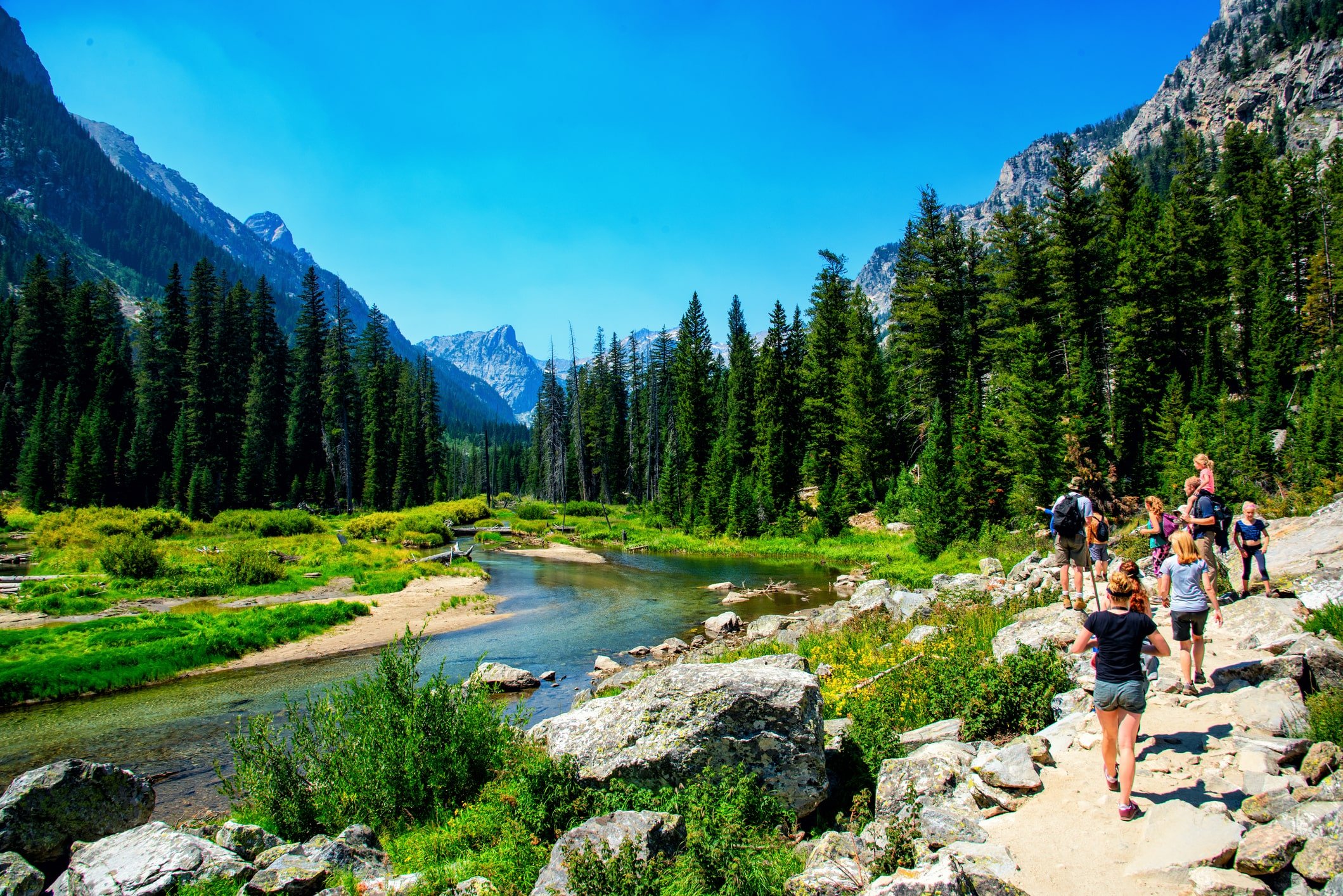Week long hiking trails offer an unparalleled opportunity for adventure and self-discovery. These immersive experiences push physical and mental limits, rewarding hikers with breathtaking scenery and a profound connection with nature. From the towering peaks of the Himalayas to the serene forests of the Pacific Northwest, week-long treks present diverse challenges and unforgettable moments. This guide delves into the planning, preparation, and responsible practices necessary for a successful and rewarding journey.
We’ll explore popular hiking destinations worldwide, comparing difficulty levels and highlighting unique regional characteristics. Essential gear checklists, route-planning strategies, and navigation techniques will be detailed, ensuring a safe and enjoyable experience. Furthermore, we’ll address environmental considerations, emphasizing Leave No Trace principles and the importance of responsible hiking practices to preserve these incredible landscapes for future generations. Finally, we’ll cover physical and mental preparation, wildlife safety, and visual descriptions of some of the most stunning week-long trails around the globe.
Popularity and Geographic Distribution of Week-Long Hiking Trails
Week-long hiking trails offer a unique opportunity for immersive wilderness experiences, attracting adventurers from around the globe. The popularity of these trails, however, varies significantly based on geographic location, difficulty, and accessibility. Factors such as climate, scenery, and existing infrastructure influence the number of hikers and the overall experience.
Popular Regions for Week-Long Hiking Trails
Several regions consistently rank high in popularity for week-long hiking adventures. The Appalachian Trail in the eastern United States, for example, draws thousands of thru-hikers annually, showcasing the enduring appeal of long-distance trails in established national parks. The Tour du Mont Blanc, circling the Mont Blanc massif in the Alps, is another hugely popular option, attracting hikers from across Europe and beyond, known for its stunning alpine scenery and well-maintained trails. In South America, the Inca Trail to Machu Picchu, while requiring permits and often booked months in advance, remains incredibly popular, offering a blend of history and challenging trekking. Finally, New Zealand’s varied landscapes, particularly the trails in Fiordland National Park and the Abel Tasman National Park, attract hikers who enjoy diverse terrains and stunning coastal views.
Difficulty Levels Across Regions
The difficulty of week-long hiking trails varies drastically depending on the region and specific trail. Trails in the Himalayas, for instance, present significantly greater challenges than those in the Appalachian Mountains, demanding higher levels of physical fitness, specialized equipment, and potentially high-altitude acclimatization. Desert trails, such as those in the southwestern United States or parts of Australia, pose unique difficulties related to extreme heat, water scarcity, and navigation. Conversely, trails in well-maintained national parks in Europe or North America often have better infrastructure, clearer signage, and easier access to supplies, making them more accessible to a wider range of hikers. The Inca Trail, while popular, is known for its steep ascents and altitude, demanding a good level of fitness.
Unique Characteristics of Trails in Various Geographic Locations
Week-long trails offer diverse experiences based on their location. Mountain range trails, like those in the Alps or the Rockies, provide breathtaking views, challenging ascents and descents, and opportunities for wildlife viewing. Forest trails, common in the Pacific Northwest of the United States or parts of Canada, offer a different experience, characterized by lush greenery, shaded paths, and opportunities for birdwatching and spotting various flora and fauna. Desert trails, found in areas like the Mojave Desert or the Sahara, emphasize resilience and careful planning, with a focus on water conservation and navigating challenging terrain. Coastal trails, such as those found in New Zealand or along parts of the California coast, offer stunning ocean views and opportunities for kayaking or other water activities.
Average Costs of Permits and Accommodation Near Popular Trails
The cost of permits and accommodation varies considerably depending on the location and time of year. Below is a table illustrating average costs in four different countries. These are estimates and can vary widely depending on the specific trail, time of year, and type of accommodation chosen.
| Country | Permit Fee (USD) | Accommodation (per night, USD) | Notes |
|---|---|---|---|
| United States (Appalachian Trail) | 0-50 (varies by section) | 20-150 (camping to lodging) | Camping is generally cheaper; permits are often required for specific sections. |
| France (Tour du Mont Blanc) | 50-100 (depending on permit type and duration) | 50-200 (mountain huts to hotels) | Mountain huts are often booked well in advance. |
| Peru (Inca Trail) | 500+ (includes porter fees and guide) | 50-150 (hotels in Cusco and nearby towns) | Permits are essential and require booking through an authorized agency. |
| New Zealand (Fiordland National Park) | 20-50 (varies by track) | 50-200 (huts and lodges) | Booking huts in advance is strongly recommended, especially during peak season. |
Trail Planning and Preparation for Week-Long Hikes
Embarking on a week-long hiking adventure requires meticulous planning and preparation to ensure a safe and enjoyable experience. Careful consideration of gear, route selection, navigation methods, and a well-structured itinerary are crucial for success. Overlooking even minor details can significantly impact the overall trip.
Essential Gear Checklist for a Week-Long Hike
A comprehensive gear list is paramount for a week-long hike. Items should be chosen based on the specific climate and terrain, prioritizing lightweight, durable, and versatile equipment. Redundancy in certain items, like extra batteries or first-aid supplies, is highly recommended.
- Backpack (50-70 liters): A comfortable and appropriately sized backpack is fundamental to carrying all necessary gear. Consider a frameless pack for increased maneuverability or a framed pack for better weight distribution.
- Tent: A lightweight, waterproof, and easy-to-pitch tent is essential for shelter. Consider a double-walled tent for better weather protection.
- Sleeping Bag and Pad: Choose a sleeping bag appropriate for the expected temperatures. A sleeping pad provides insulation and comfort.
- Cooking System: A lightweight stove, fuel, cookware, and utensils are needed for preparing meals.
- Clothing: Pack layers of clothing suitable for varying weather conditions, including moisture-wicking base layers, insulating mid-layers, and a waterproof outer shell. Include hiking boots, hiking socks, and extra clothing for changing.
- Navigation: A map, compass, GPS device, and a backup method are essential for staying on course.
- First-Aid Kit: A comprehensive first-aid kit including blister treatment, pain relievers, antiseptic wipes, and any personal medications is crucial.
- Water Bottles/Hydration Reservoir: Carrying sufficient water is vital. A hydration reservoir or multiple water bottles are recommended.
- Food: Plan meals carefully, choosing lightweight, non-perishable, and high-energy foods.
- Headlamp/Flashlight: A reliable light source is essential for navigating in low-light conditions.
- Sunscreen and Insect Repellent: Protection from the sun and insects is crucial.
- Repair Kit: Include items for repairing gear, such as duct tape, cordage, and a multi-tool.
- Trekking Poles (Optional): Trekking poles can significantly reduce strain on knees and ankles.
Strategies for Planning a Safe and Enjoyable Week-Long Hiking Route
Planning a safe and enjoyable route involves careful consideration of several factors. Researching the trail thoroughly, assessing personal fitness levels, and accounting for potential weather changes are vital aspects of successful trip planning.
Factors to consider include the trail’s difficulty, elevation gain, water sources, potential hazards, and the availability of campsites. Consulting trail guides, online resources, and experienced hikers can provide valuable insights. It’s advisable to choose a trail that aligns with your experience level and physical capabilities, avoiding overly ambitious routes for first-time week-long hikers. Always inform someone of your hiking plans, including your itinerary and expected return time.
Navigation Methods for Week-Long Trails
Reliable navigation is crucial during a week-long hike. While GPS devices offer convenience, relying solely on technology is risky. A combination of methods ensures redundancy and preparedness for potential equipment failures.
Map and compass navigation is a fundamental skill for any hiker. Learning to use these tools effectively is essential for maintaining accurate bearings and identifying your location, especially in areas with poor GPS reception. GPS devices provide additional location information and can help track progress, but should be used in conjunction with a map and compass. Understanding how to interpret topographic maps is also crucial for understanding elevation changes and potential route challenges.
Sample Itinerary for a Week-Long Hiking Trip
This sample itinerary assumes a moderate fitness level and favorable weather conditions. Adjust distances and campsites based on individual capabilities and trail conditions. Always prioritize safety and adjust the plan as needed.
| Day | Distance (miles) | Description | Potential Campsite |
|---|---|---|---|
| 1 | 8 | Gentle ascent, scenic views. | Lakeview Camp |
| 2 | 10 | Steeper climb, challenging terrain. | Summit Meadow Camp |
| 3 | 6 | Relatively flat terrain, river crossing. | Riverbend Camp |
| 4 | 7 | Moderate ascent, panoramic views. | High Ridge Camp |
| 5 | 5 | Gentle descent, forest trail. | Forest Glen Camp |
| 6 | 9 | Moderate ascent and descent, varied terrain. | Valley View Camp |
| 7 | 4 | Final descent, return to trailhead. | Trailhead |
Conclusion
Embarking on a week-long hiking trail is a transformative experience. Careful planning, preparation, and a respect for the environment are paramount to a safe and rewarding adventure. By understanding the potential challenges and embracing responsible practices, you can fully immerse yourself in the beauty and wonder of the natural world, creating memories that will last a lifetime. Remember to always prioritize safety, leave no trace, and savor the incredible journey ahead.




